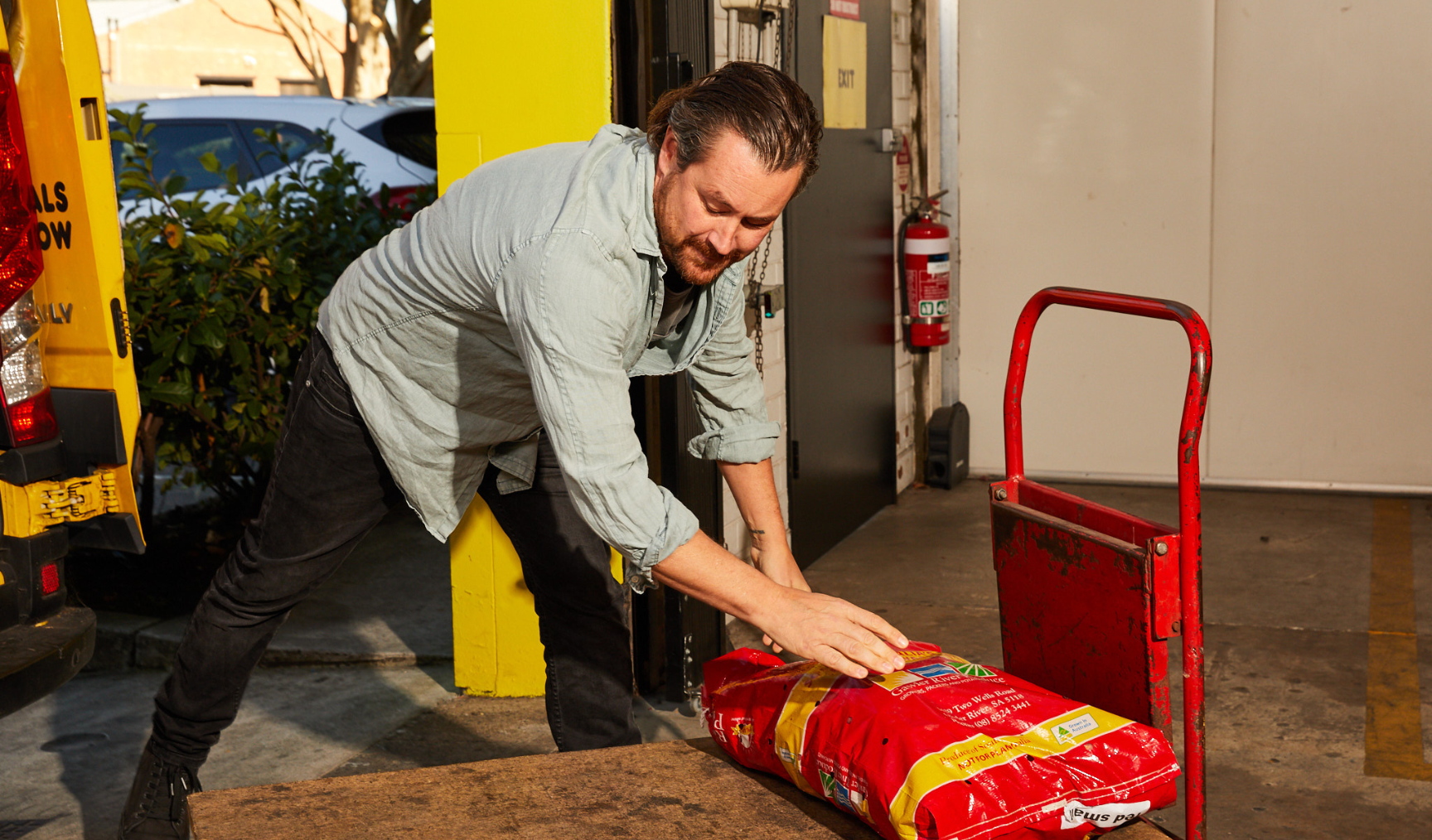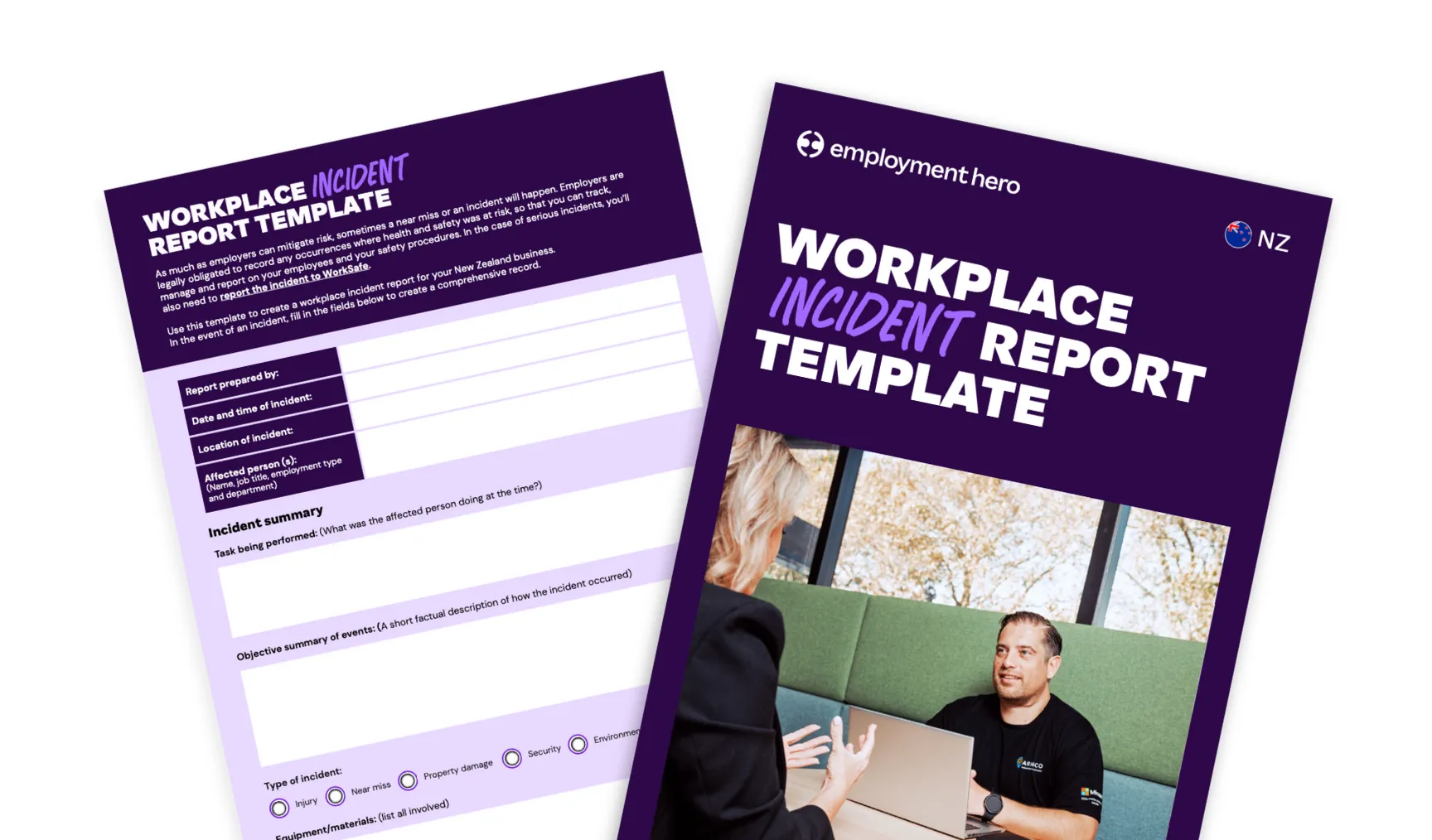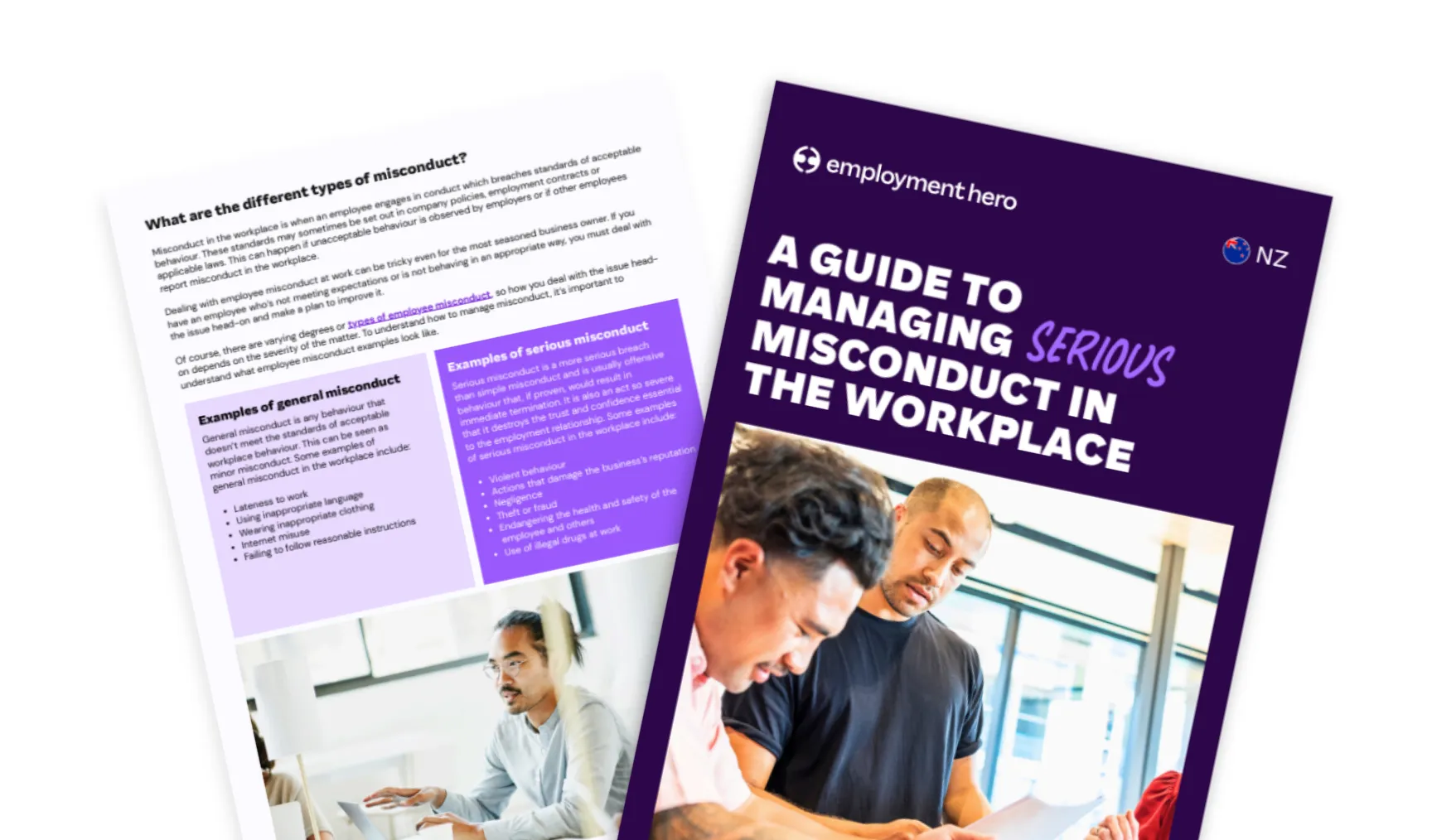NZ Workplace Health and Safety Factsheet
Published
NZ Workplace Health and Safety Factsheet
Published
Health and safety – there’s no compromise. According to WorkSafe, work-related health accounts for around 750-900 deaths a year in New Zealand, and 5000-6000 hospitalisations. For any operating business, it’s crucial to facilitate a safe working environment.
What can you expect?
Under the Health and Safety at Work Act 2015, both “Persons Conducting Business or Undertaking” (PCBU) and workers have respective health and safety duties in the workplace.
We’ve developed this factsheet to help you understand your PCBU duties in the workplace and develop a comprehensive health and safety plan.
Disclaimer: The information in this guide is relevant as at 13 November 2024, and has been prepared by Employment Hero Pty Ltd ABN (11 160 047 709) (Employment Hero). The views expressed herein are general information only and are provided in good faith to assist employers and their employees. The Information is based on data supplied by third parties. While such data is believed to be accurate, it has not been independently verified and no warranties are given that it is complete, accurate, up to date or fit for the purpose for which it is required. Employment Hero does not accept responsibility for any inaccuracy in such data and is not liable for any loss or damages arising either directly or indirectly as a result of reliance on, use of or inability to use any information provided in this written guide.
Download this essential factsheet now.
What does health and safety in the workplace mean?
Workplace health and safety consists of guidelines and procedures that protect the welfare of those in an organisation. Every workplace has hazards and risks that can affect employees, whether it’s physical dangers or emotional stressors. It’s essential that businesses consider everything that could affect employee welfare, and act accordingly to mitigate those risks.

Why is workplace safety important?
According to the Health and Safety at Work Act 2015, employees should be given the highest level of protection from workplace health and safety risks. That means that it’s a legal requirement for all New Zealand businesses to ensure that they’re prioritising occupational health and safety.
Outside of the legal aspects (and from a business point of view), ensuring that your workplace is a comfortable and safe place to work reduces the chance of injury and sick leave. It is also important for employee happiness and retention in the long run.
Who is responsible for workplace health and safety duties?
According to the Act, the responsibility of health and safety lies with two groups. Both these groups have duties to perform to keep a workplace safe.
The first group is classified as ‘Persons Conducting a Business or Undertaking’ (PCBU). This consists of employers, self-employed individuals, designers, principals and other leaders.
The other group are classified by the Act as workers, and include employees and contractors.
What key health and safety responsibilities do employers have?
As PBCUs, employers hold the primary duty of care for workplace health and safety. This doesn’t just include their team members, but the people who come into contact with their business, such as customers, clients or the general public.
Some employer responsibilities include:
- Providing necessary training and instruction to their team in order to mitigate workplace health and safety hazards
- Monitoring the health of their workers to minimise the chance of illness and injury
- Ensuring that the work environment is free from hazards
It’s important to note that WorkSafe NZ specifies that managing risks be done as far as is reasonably practicable. That is to say, actions must be as reasonable and effective as is within your means.
For a real world example, the majority of the equipment in a manufacturing plant would be deemed a health and safety risk. The owners of that plant can’t remove the equipment altogether as it’s essential to the business operation. However, they should do as much as possible to reduce the risk to employees using the machinery.

What are the most common hazards in a workplace?
WorkSafe defines workplace hazards through five different categories:
- Physical hazards – elements of a workplace that can cause physical harm, such as machinery, equipment with poor ergonomics or heavy objects.
- Environmental hazards – environmental elements such as hot or cold temperatures, uneven ground or darkness.
- Hazardous substances – chemicals that can be toxic or damaging.
- Social hazards – people-related risks, including stress, overwork or bullying.
- Biological hazards – viruses and bacteria that can contaminate workers.
All workplaces will see a combination of hazards from these categories. For example, during the pandemic, the risk of the virus was a biological hazard that affected a huge number of workplaces globally.
Physical hazards can range from the obvious, such as heavy machinery on a construction site, or it can be as simple as a poor desk set-up in a home office.
How do you maintain safety in the workplace?
When it comes to occupational health and safety in the workplace, the key is to be proactive, as well as reactive. You need to be able to anticipate risk and plan accordingly, as well as respond to existing hazards affecting the workplace.
Our factsheet will take you through the basics of creating a health and safety plan, which will enable your business to properly assess the hazards and commit to mitigating them.
It can help to assign individuals in the business as safety representatives, who can take ownership of developing and maintaining this plan. It’s crucial as well to have a workplace policy that the whole business can be aware of – check out our policy template for some ideas.
The plan isn’t designed to be a one-and-done task, but a constantly evolving document that grows with your business.
Get started with your plan by downloading our factsheet today.
Download the factsheet here
Related Resources
-
 Read more: Incident report template NZ: free download for businesses
Read more: Incident report template NZ: free download for businessesIncident report template NZ: free download for businesses
Download our free NZ incident report template. Record and report workplace incidents correctly under HSWA and ACC requirements.
-
 Read more: Serious misconduct in New Zealand: What employers must know
Read more: Serious misconduct in New Zealand: What employers must knowSerious misconduct in New Zealand: What employers must know
Learn what serious misconduct means under NZ law, common examples, and how to manage the process legally and fairly. Protect…
-
 Read more: Free business plan template for New Zealand business owners
Read more: Free business plan template for New Zealand business ownersFree business plan template for New Zealand business owners
Published Published Starting and running a business is a journey that needs direction. That’s why a well-crafted business plan is…





















